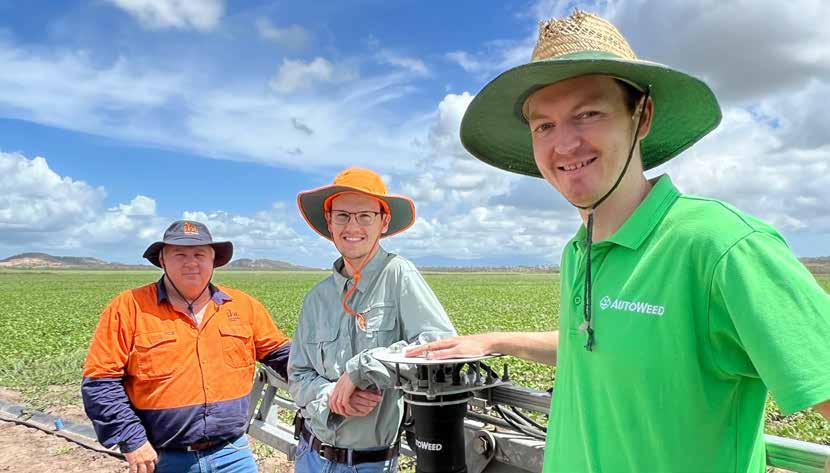
3 minute read
ROBOTIC WEED CONTROL TRIALS SHOW PROMISE IN THE BURDEKIN
ROBOTIC WEED CONTROL TRIALS
SHOW PROMISE IN THE BURDEKIN
Advertisement
Trials in the Burdekin involving artificial intelligence and precision robotic weed control are showing early promise in reducing herbicide use.
The AutoWeed technology at the centre of the research uses artificial intelligence and visible-light imagery to detect and spray specific weeds by differentiating them from the crop.
SRA Burdekin District Manager Terry Granshaw said three initial trials focused on treating nutgrass in sugarcane.
The trials compared traditional blanket spraying of nutgrass applying Sempra® and Krismat® with application of the same chemicals using the spot spraying tool.
On average, the robotic spot spraying tool was 95 per cent as effective as blanket spraying, and reduced herbicide usage by 35 per cent.
AutoWeed Technical Officer Jake Wood said trial outcomes varied according to the degree of weed infestation in a paddock.
SRA District Manager Burdekin Terry Granshaw, AutoWeed Technical Officer Jake Wood and AutoWeed Managing Director Dr Alex Olsen in the field during a robotic spray trial on a legume crop.
(Right) The 4-row boom sprayer used in the robotic spray trials on sugarcane.
“We're seeing big reductions in herbicide. If you've got an 80 per cent infestation of weeds, we can definitely reduce herbicide usage by at least 20 per cent. But if you've only got 20 or 30 per cent weed infestation, we can save 70 per cent herbicide usage,” Jake said.
Terry Granshaw said trials are also being undertaken on legumes.
“We're trying to show the adaptability of this robotic spot sprayer, and by doing it on these legume crops we actually target grasses and broadleaf,” Terry said. “It’s a completely different type of spray rig.”
The AutoWeed detection and spot spraying can be retrofitted to existing spray booms. The system uses a camera positioned in front of spray nozzles to detect the presence of a weed and trigger spraying as the vehicle passes over the crop.
This results in herbicide reductions matching the level of weed pressure in a paddock, meaning lower weed management costs for farmers.
The trials follow around six years of research involving AutoWeed and James Cook University, to move beyond the limitations of spray systems currently in the market. “They use things like near infrared technology and they look for the signature of chlorophyll. That's great. However, crop plants also have chlorophyll and they’re the ones you don't want to be spraying. So, they're good for fallow, but not very useful once you start growing the crop and still want to control weeds,” Jake said.

“We can take our technology into these paddocks when you've got crops growing already and we can basically pinpoint and target just the weeds of interest. So, if you want to spray specifically broadleaf or if you want to spray specifically grassweeds, we can do that in amongst your already growing crop.”
Findings to date, also suggest improved environmental outcomes, with robotic spot spraying reducing the concentrations and loads of herbicide in runoff.
Water quality experiments conducted after the spray trials showed that spot spraying reduced concentration of ametryn and trifloxysulfuron in runoff by 49 per cent and 60 per cent respectively compared to blanket spraying.
Terry Granshaw said the trials were attracting strong interest from growers and had potential to significantly reduce herbicide costs and use into the future.
“If we can save a dollar, why not do it? And the environmental benefit is a bonus.” Terry said.
“I don't know a farmer who loves putting herbicide on, and the fact that we can come out here and use this technology, to actually choose a weed within our green crop and target that weed species is amazing.
“I've been at the shed meetings and growers are asking me about this and we've been talking about it just briefly, but there's a lot of interest in it.”

The Reducing herbicide usage on sugarcane farms in reef catchment areas with precise robotic weed control project is funded by a grant through the partnership between the Australian Government’s Reef Trust and the Great Barrier Reef Foundation. The research is a collaboration between James Cook University, AutoWeed and Sugar Research Australia.










